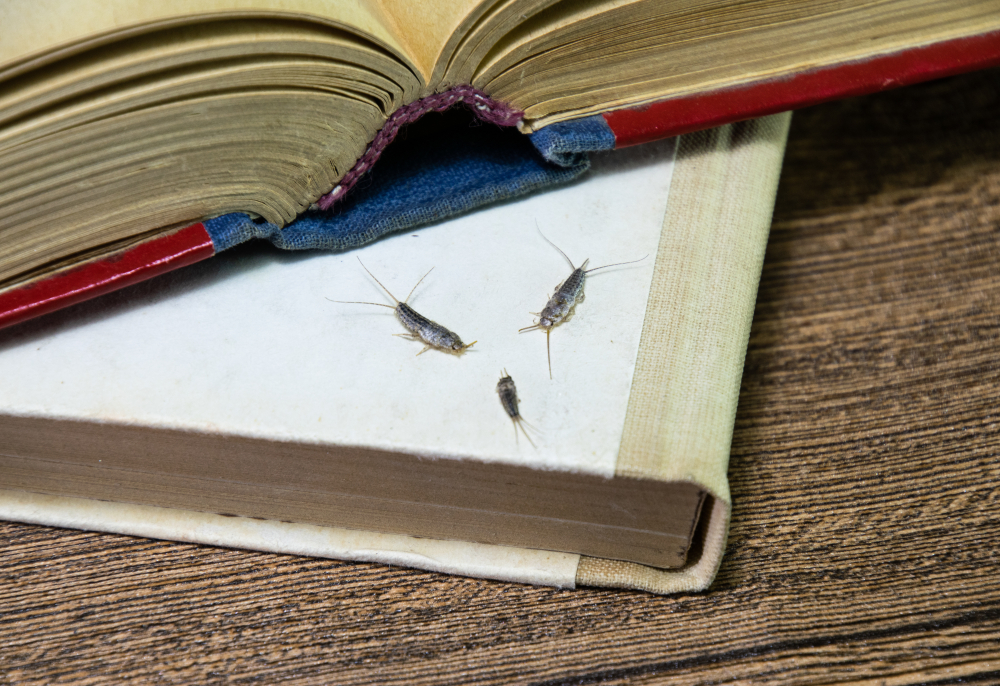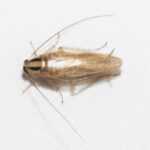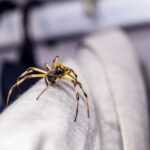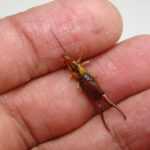Silverfish Bugs: Effective Ways to Get Rid of Them Fast
Silverfish bugs thrive in moist, warm environments and can damage household items like books, fabric, and food. This comprehensive guide will help you identify silverfish, understand their habits, detect infestations, and find the most effective ways to prevent and eliminate them from your home.
- Silverfish thrive in humid environments and are commonly found in kitchens, bathrooms, basements, and crawl spaces, especially during colder months.
- They are primarily harmful due to their destructive feeding habits on paper products, fabric, starchy food, and stored dry foods, rather than direct harm to humans or pets.
- Effective prevention and elimination methods include reducing moisture levels, sealing small cracks and crevices, using natural repellents like cedar oil, vacuuming regularly, and employing traps or professional pest control services for persistent infestations.
Understanding Silverfish Bugs
Silverfish bugs are recognized for their unique metallic appearance and fish-like shape. They have small, elongated, wingless bodies with a flattened body covered in silvery-gray scales. Often called the common name silverfish, these insects move in a distinctive fish-like manner. When disturbed, adult silverfish dart toward another dark, secluded spot, making them difficult to catch.
These wingless insects are nocturnal, meaning they are active at night and rarely seen during the day. This nocturnal silverfish activity often keeps them out of sight, contributing to the stealthy nature of a silverfish infestation. The colder months drive them indoors as they seek warmth and moisture, increasing their activity in human habitats.
Despite their unsettling speed and appearance, silverfish are fascinating creatures belonging to a primitive species of insects called Thysanura, which includes jumping bristletails and Thermobia domestica. Understanding their habits and behaviors is the first step in managing and preventing silverfish infestations effectively.
Where Do Silverfish Bugs Live?
Silverfish bugs love moist areas and thrive in humid environments, making basements, attics, crawl spaces, and bathrooms ideal habitats. These insects are often found in damp areas of homes where moisture and food sources are abundant. During cooler months, silverfish tend to migrate indoors, seeking out these humid areas for survival.
In addition to indoor locations, urban silverfish can also be found outdoors, hiding in leaf litter, under rocks, or in old boxes and cardboard boxes. Certain regions, like Florida, provide a perfect climate for silverfish with high humidity and warm temperatures, making them a common pest in these areas. Understanding their preferred habitats can help you locate and eliminate silverfish more effectively.
What Do Silverfish Bugs Eat?
Silverfish bugs have a voracious appetite for carbohydrates and proteins. They are particularly fond of starch and sizing found in paper products, including old books, documents, wallpaper, and cardboard boxes. Additionally, silverfish feed on grains, vegetables, dry foods, and fabric, often causing significant damage in pantries and storage areas.
The presence of silverfish is often indicated by the damage they leave behind. They can ruin fabric, paper, and cardboard items, making them a nuisance in homes and libraries. Recognizing the signs of their feeding habits is crucial in identifying and addressing a silverfish infestation.
Signs of a Silverfish Infestation
Identifying a silverfish infestation involves looking for specific signs and damage. To find silverfish, check kitchens, bathtubs, showers, attics, basements, and crawl spaces. They leave behind yellow stains on materials they consume, particularly books and papers, which is a telltale sign of their presence.
Another indicator of a silverfish infestation is the presence of silverfish eggs and shed skins, which resemble small, translucent specks on surfaces. These pests also cause damage to items made from paper, glue, silk, and various textiles due to their feeding habits. Stored food products, such as cereals and pet food, are also attractive to silverfish, and they can often be found in pantry areas.
While feeding, silverfish leave behind waste and scales, contributing to further damage of materials. They can cause significant harm to books, paper, and clothing, making it essential to address an infestation promptly.
Are Silverfish Bugs Dangerous?
Silverfish bugs are generally not harmful to humans or pets. They have weak jaws and do not bite or spread disease. However, they can trigger allergic reactions in some individuals, particularly those with sensitivities to insect scales and waste. The real danger of silverfish lies in their ability to damage household items, including books, fabrics, and stored food products.
Despite their lack of direct harm to humans, the nuisance and potential for allergic reactions make it crucial to manage and eliminate silverfish infestations effectively. Understanding the risks associated with silverfish can help you take appropriate action to protect your home and belongings.
How to Prevent Silverfish Infestations
Preventing silverfish infestations involves maintaining low moisture levels and humidity, ideally below 60 percent. Ventilating moisture-prone areas, such as kitchens and bathrooms, can make these spaces less inviting for silverfish. Using caulk to seal small cracks, crevices, and openings is another effective way to prevent their entry.
Natural repellents, such as cedar oil and cedar shavings, can deter silverfish when diffused or sprayed in affected areas. Essential oils can also disrupt their pheromonal communication, making your home less attractive to these pests. Regularly vacuuming and cleaning reduce the availability of starchy food and materials that silverfish feed on, further preventing infestations.
In addition to these measures, storing items in airtight containers and keeping your living spaces dry and clutter-free can significantly reduce the risk of a silverfish infestation. Taking these proactive steps can help you maintain a silverfish-free home.
Effective Methods to Eliminate Silverfish
Eliminating silverfish effectively requires a combination of methods. Sticky traps are an excellent way to capture silverfish by attracting them with food placed inside. Diatomaceous earth powder is another effective solution, as it dehydrates silverfish by absorbing their natural oils. Bait traps or insecticides specifically designed for silverfish can also help control their population. These methods can significantly reduce silverfish numbers in your home.
For more persistent infestations, trained technicians with specialized equipment can effectively eradicate silverfish. Addressing silverfish infestations promptly is essential to prevent property damage. Utilizing a combination of traps, powders, and professional pest control services can help you eliminate silverfish swiftly and efficiently.
Interesting Facts About Silverfish Bugs
Silverfish bugs have been around for over 400 million years, making them one of the oldest insect species on Earth. Their primitive features have changed little over time, showcasing their successful adaptation to various environments.
These insects have tail-like appendages that help them maintain balance and navigate their surroundings. Their flattened body shape allows them to squeeze into small cracks and crevices, making them elusive and hard to detect.
Silverfish love darkness and moisture, which is why they are often found in bathrooms and basements. Interestingly, they can survive for weeks without food but need constant moisture to thrive, emphasizing the importance of reducing humidity to control their population.
Tips to Reduce Humidity and Make Your Home Unfriendly to Silverfish
- Use dehumidifiers in damp areas like basements and crawl spaces to reduce moisture levels.
- Fix leaking pipes, faucets, and drainage issues promptly to eliminate water sources.
- Improve ventilation by installing exhaust fans in bathrooms and kitchens.
- Use air conditioners during humid seasons to maintain a dry indoor environment.
- Avoid storing items in cardboard boxes; instead, use airtight containers to prevent silverfish from accessing food sources.
- Regularly clean and vacuum areas prone to silverfish activity to remove eggs and food debris.
Frequently Asked Questions
What causes silverfish in the home?
Silverfish are attracted to warm, damp environments and often enter homes through small cracks, crevices, and infested items such as old boxes and cardboard boxes. To prevent their presence, it is essential to maintain dry conditions and seal potential entry points.
Should I be worried if I have silverfish?
You should be concerned about silverfish, as they can cause damage to your home and possessions. While they do not bite or spread disease, it is important to control their infestation to prevent potential contamination of food and structural damage.
What do silverfish bugs eat?
Silverfish bugs primarily consume carbohydrates and proteins found in starch, paper products, grains, vegetables, and starchy food. Thus, maintaining a clean and dry environment can help deter these pests.
Where are silverfish bugs commonly found?
Silverfish bugs are commonly found in damp areas such as basements, attics, kitchens, bathrooms, and crawl spaces. Maintaining dry conditions in these spaces can help prevent their presence.
How can I prevent a silverfish infestation?
To prevent a silverfish infestation, maintain low moisture levels and humidity, seal small cracks and crevices, vacuum regularly, and utilize natural repellents such as cedar oil and cedar shavings. These steps create an inhospitable environment for silverfish, reducing the likelihood of an infestation.
Can silverfish live in dry areas?
While silverfish prefer humid environments, they can survive in less humid areas if food sources are available. However, reducing humidity significantly limits their ability to thrive and reproduce.
Do silverfish bite humans?
Silverfish have weak jaws and do not bite humans. They are harmless in terms of biting but can cause damage to household items.
How long do silverfish live?
Silverfish can live for up to three years, depending on environmental conditions such as humidity and food availability.
In summary, silverfish bugs are fascinating yet troublesome pests that thrive in humid environments and feed on a variety of household materials. By understanding their habits, reducing moisture levels, and employing effective control methods, you can protect your home from damage and maintain a pest-free environment.





